The guide SEO Copywriting for Beginners (flight plan) is the updated version of the DIY Copywriting Guide for Entrepreneurs (in Spanish only), which I first created in 2020 with the support of several academics who reviewed and validated both the methodology and its effectiveness.
It introduces a fresh way of learning, drawing inspiration from the symbolism of a pilot’s flight plan, a document designed to guide them safely to their destination by including every key detail of the route and other essential data.
Following the same concept, this guide is your flight plan for SEO copywriting in the age of AI. It will help you chart your course, avoid unnecessary turbulence, and reach your goals with clarity and confidence, in other words, turning followers into buyers.
If you’re just starting with SEO and want to learn how to write content that truly ranks, not only in search engines but also across AI platforms, this guide is for you!
Let’s get started!
Pre-Flight Briefing: Welcome to SEO Copywriting for Beginners!
Imagine your business as a plane waiting at the gate. Your website is your cockpit, your content is your fuel, and your readers are your passengers. The destination? Higher visibility, more engagement, and increased conversions, whether people find you through Google or an AI assistant like Gemini, Perplexity, ChatGPT or Bing Copilot.
Then, you find turbulence on the way. The skies are more crowded than ever. You’re not just competing for a spot on Google’s page one; you’re competing to be the answer AI platforms choose to serve.
That’s why you need this DIY SEO Copywriting Flight Plan for Beginners. It’s your pilot’s manual for writing content that:
- Ranks in search engines.
- Appears in AI-generated answers.
- Converts without sounding pushy.
This guide is modelled on a five-stop flight path, expanded with AI-optimisation checkpoints, real-world examples, and exercises you can do yourself.
Continue reading, and let’s start!
The DIY Philosophy in the Age of AI: What Does ‘Do It Yourself’ Really Mean Today?
DIY, short for Do It Yourself, is all about empowering you to create on your own, learning through hands-on practice while also saving money. In the AI era, it’s more than just a way to cut costs: it’s a skill that helps you stay relevant, visible, and in control of your brand’s voice, even when algorithms and AI assistants are shaping what people read.
What’s the purpose of this DIY SEO Copywriting Flight Plan for Beginners?
This AI-ready flight plan is your map to writing copy that truly connects with your customers and with the AI platforms they use to find answers. By following this route, you’ll know exactly how to take your audience from casual readers to loyal buyers, one clear, persuasive piece of content at a time.
Welcome aboard Flight Number 001, bound for turning followers into customers with copy that truly connects and captivates!
Runway 0 – Preparing for AI + SEO Take-Off
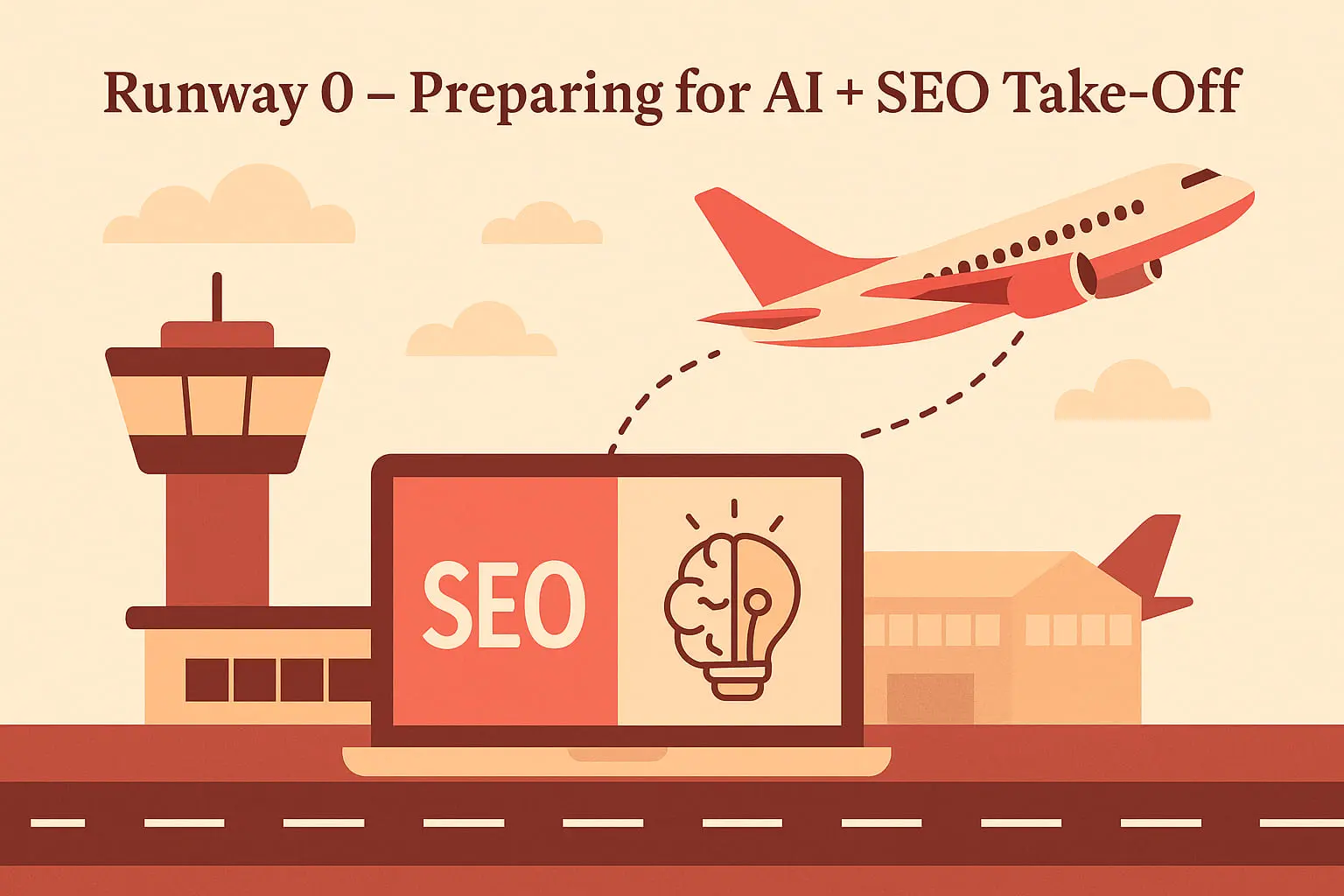
Before we even taxi, you need to understand the dual-airspace strategy:
SEO airspace – Traditional search engines still account for massive discovery. Ranking here requires keyword research, technical optimisation, and relevance.
AI airspace – Chatbots and search-integrated AI tools (like Bing Chat) now answer queries directly, pulling from multiple sources. They favour clear, structured, authoritative content.
Flight Crew Tip:
If your content sounds like a direct, helpful answer to a user question, both Google’s Featured Snippets and AI platforms are more likely to surface it.
Example:
If someone asks Gemini: “What is seo copywriting for beginners?”
Your page should include an H2 exactly like that, followed by a 2–3 sentence answer, then an expanded explanation.
Stop 1 – Mission: Your Destination in the Sky
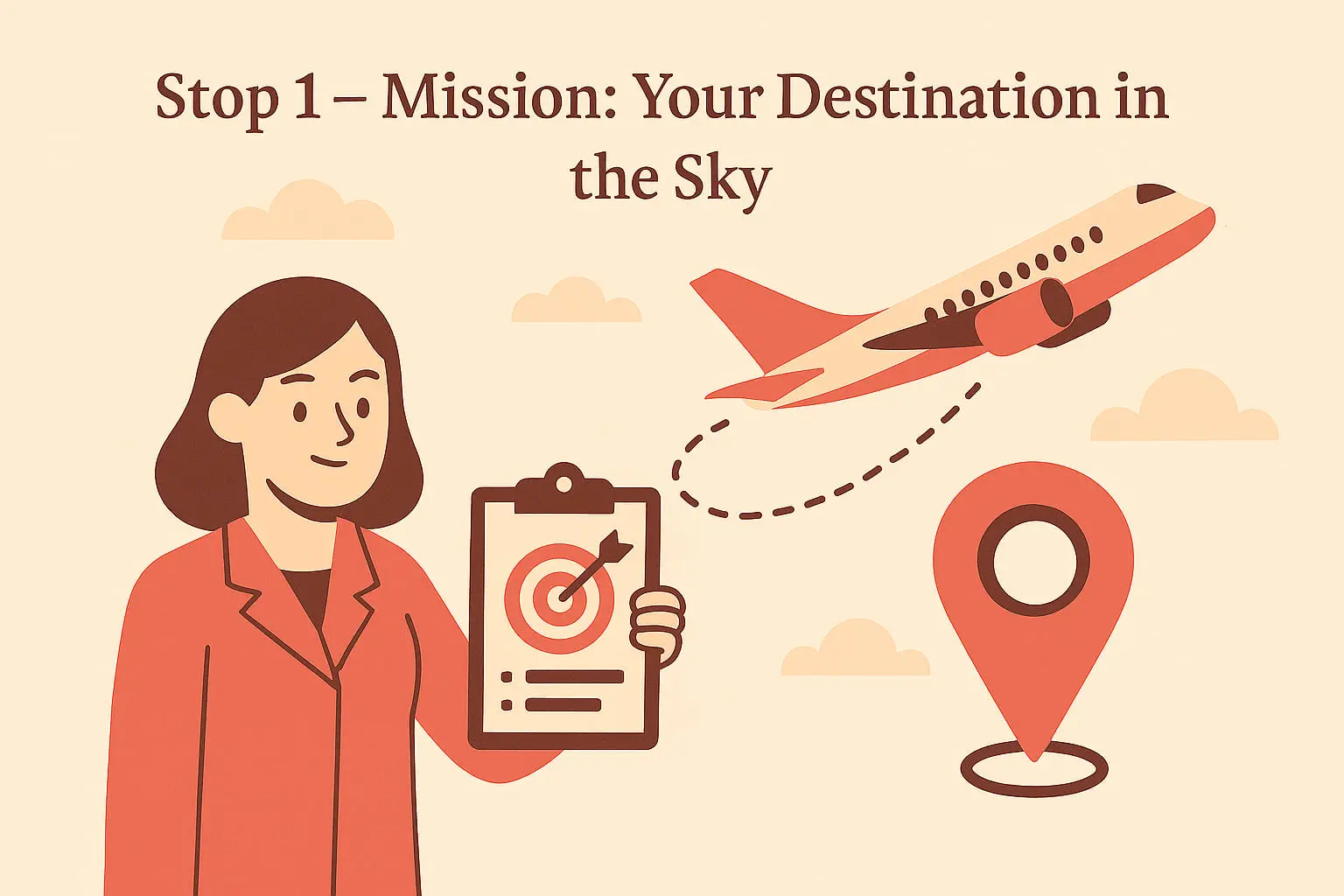
Without a destination, you burn fuel without getting anywhere. Your mission is the compass for all your copywriting.
Why Mission Matters in SEO Copywriting
Your mission shapes:
- Which topics you cover.
- Which keywords you target.
- How you speak to your audience.
Example Mission (Eco-Friendly Fashion Brand)
“To empower conscious shoppers to find sustainable, stylish clothing they’ll love, and keep for years.”
AI-Optimisation Layer: Frame your mission as an answer to the question: “What does your brand do and why does it matter?”
Quick Exercise:
Write a one-sentence mission that includes:
- Audience (who you serve).
- Problem you solve.
- Result or transformation.
Stop 2 – Passengers: Know Your Travellers (and Bots)
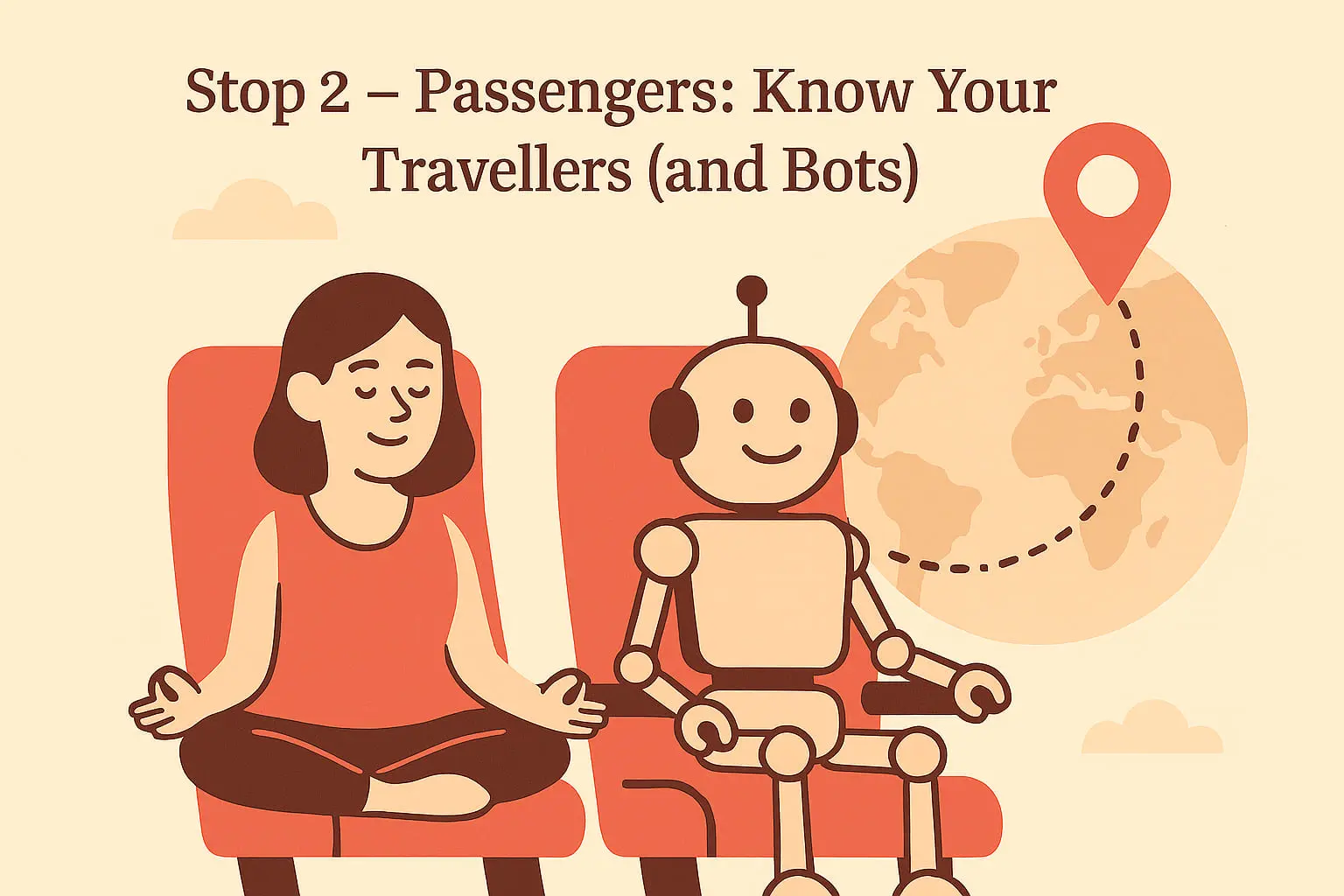
Every good pilot knows who’s onboard. In your case, you have two passenger types:
- Human readers (customers, leads, partners).
- AI “middlemen” that deliver your message to those humans.
Mapping Your Human Passengers
Create a buyer persona that’s specific enough to guide your writing.
Example Persona (Yoga Studio):
- Name: Claire
- Age: 28
- Location: Dublin
- Goal: Reduce stress and improve flexibility
- Search habits: “Beginner yoga classes near me” / “Best yoga mats”
- AI prompt habit: “Where can I find beginner yoga classes in Dublin?”
Flight Crew Tip:
Use the exact phrases your persona would search or ask AI. Include them in headings, intro, and body text.
Considering Your AI Passengers
Think of AI bots as VIP travellers; they decide what gets served in the cabin (search results). They want:
Clear definitions.
Direct answers to “what is / how to / why” questions.
Step-by-step guides.
Examples and case studies.
Example:
A heading like “How to Write SEO Copywriting for Beginners” followed by a numbered list improves your odds with AI.
Stop 3 – Aircraft: Choosing Your Voice & Tone
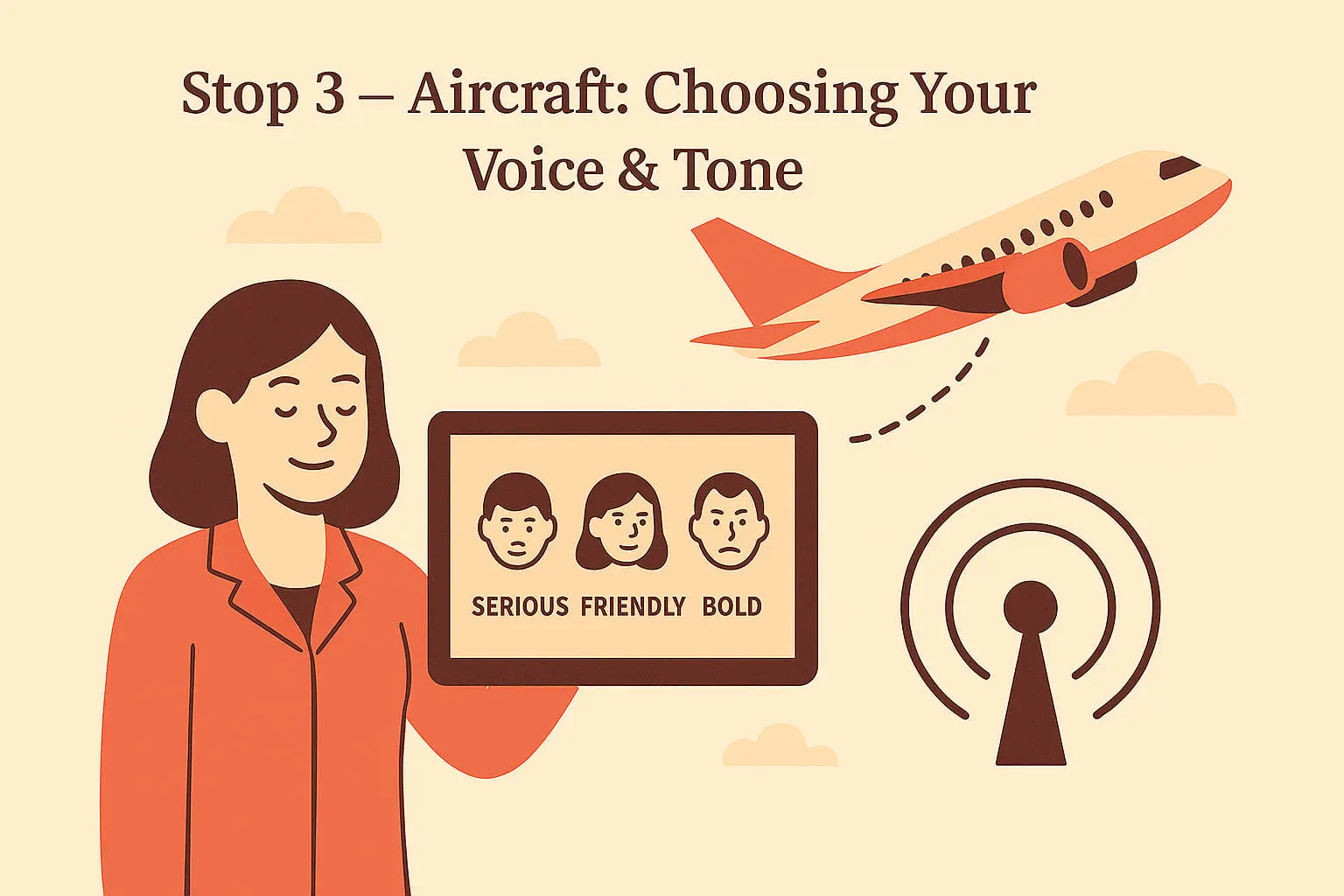
Your aircraft is how you get there, and your brand voice and tone determine the passenger experience.
Finding Your Voice
List three words that define your brand voice.
Examples:
Friendly • Informative • Empowering
Bold • Direct • Playful
Exercise:
Write one paragraph explaining your product in your chosen voice.
Then rewrite it in a different tone. Which feels right for your passengers?
AI platforms index and “remember” tone consistency. If your blog posts, product pages, and about page all use the same voice, you’re more memorable to both people and bots.
Stop 4 – Flight Conditions: Competitor & Keyword Weather Report
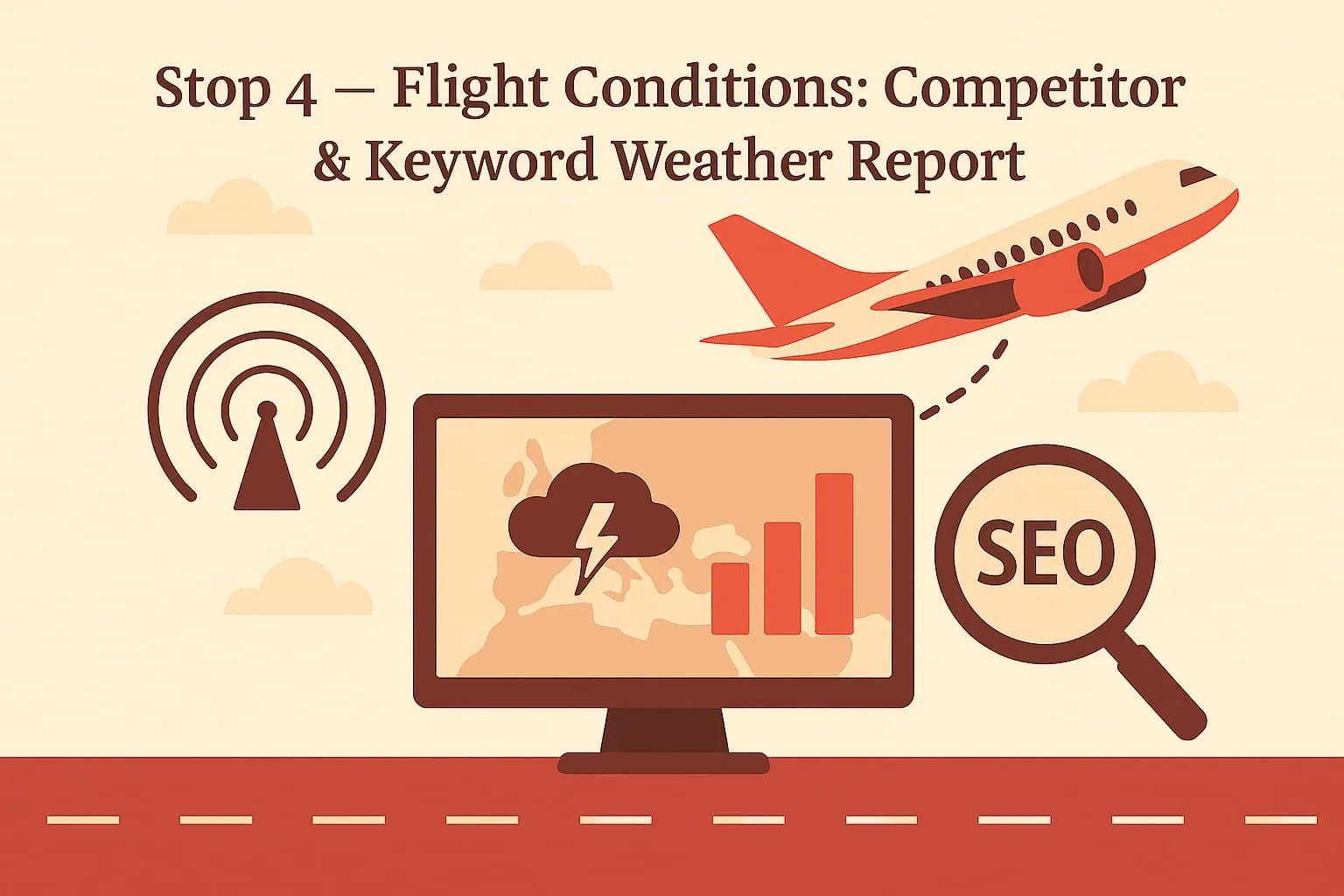
Never take off blind. Analyse the digital weather: Keyword Weather.
Start with your primary keyword: seo copywriting for beginners.
Then expand with long-tails:
- How to write seo copywriting for beginners
- DIY seo copywriting guide
- self-taught seo copywriting tips
- seo writing plan for beginners
- step-by-step seo copywriting for beginners
Use tools like Google Keyword Planner, AnswerThePublic, or even Gemini or ChatGPT to find related searches.
Competitor Radar
Search your primary keyword and study the top 5 results:
- What’s their headline?
- How do they structure content?
- What’s missing that you could add? (e.g., AI optimisation tips, examples, templates, infographics, videos)
AI Snippet Check
Ask an AI platform your target question.
- Which sources does it cite?
- Is there a gap in the answer you can fill better?
Flight Crew Tip:
If an AI answer is too generic, that’s your opening to create a richer, example-filled version.
Stop 5 – Flight Plan: The 7-Step Copywriting Checklist
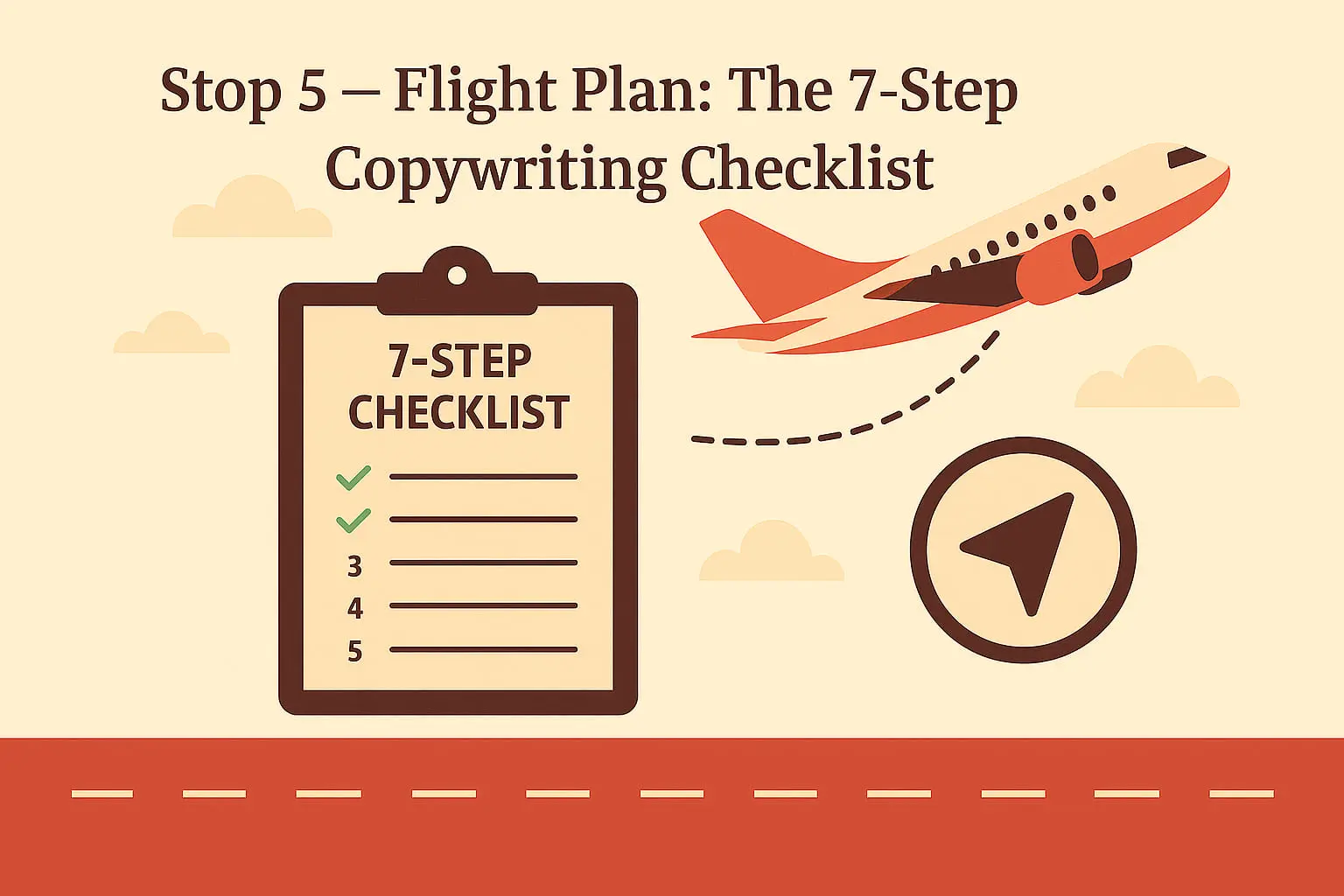
Please, find below your ready-to-fly writing process:
- Choose topic + intent: Match to a keyword and search/AI query.
- Research keywords: Primary + secondary keywords, plus related questions.
- Craft a benefit-driven headline: Keep under 60 characters.
- Write a hook intro: State problem, promise solution.
- Structure with H2/H3s, bullets, and short paragraphs: Scannable = AI friendly.
- Add examples and definitions: Concrete > abstract.
- Close with CTA: Tell readers what to do next (download, book, subscribe).
Bonus track: In-Flight Service: AI-Friendly Formatting
AI loves certain formats. Include these in your copy:
Q&A Sections
Q: What is SEO copywriting for beginners?
A: It’s writing web content that’s optimised for both search engines and human readers, with clear structure, relevant keywords, and persuasive elements.
Numbered Steps
“How to Write SEO Copywriting for Beginners” could be:
- Define your audience.
- Research keywords.
- Write a benefit-first headline.
- Structure content for easy reading.
- Optimise meta tags and internal links.
Mini-Definitions
Drop a short definition after a term:
Meta Description: The short text shown under your page title in search results, usually 150–160 characters.
Turbulence Alert: Avoid These Copywriting Pitfalls
- Keyword stuffing: Overusing your target phrase can tank rankings.
- Walls of text: Break with headings, bullets, and whitespace.
- Generic claims: Use proof: stats, testimonials, videos, examples.
- No internal linking: Every post should link to 2–3 related pages.
Landing: Your Final Boarding Checklist
Before publishing, run through this Final Boarding List:
- Mission statement at the top.
- Target keyword in title, intro, and subheading.
- Buyer persona considered.
- Voice consistent.
- FAQ section added.
- Examples included.
- Internal and external links are in place.
SEOCOPYLAB Steps In
Think of this guide as your flight manual. SEOCOPYLAB is here to support your journey as your co-pilot.
While you’ll get the fundamentals to take off and fly solo, we provide expertly validated content and smart tools designed to help you scale your content strategy efficiently and sustainably.
SEOCOPYLAB is a platform that combines AI-powered copywriting with real SEO expertise, ensuring your content performs well and aligns with best practices, all while being mindful of environmental impact.
Discover more at seocopylab.ai and get ready to create SEO content that helps your business grow faster, reach more people, and be kinder to the planet.
With this flight plan, you can fly solo. With us onboard, you can scale your content fleet.
DIY SEO Copywriting Flight Plan. A Quick Checklist
Stop 1 – Mission
Destination: One clear sentence explaining:
- Who you serve.
- The problem you solve.
- The result you deliver.
☐ Mission written in one sentence.
☐ Framed as an answer to “What does your brand do and why does it matter?”
Stop 2 – Passengers
Know your travellers (humans + AI bots)
☐ Buyer persona: name and all the details, pain points, search/AI prompt habits.
☐ Include exact phrases your audience would search or ask AI.
Stop 3 – Aircraft
Your brand voice & tone
☐ Choose 3 words to define your voice.
☐ Keep tone consistent across all content.
☐ Adapt tone for AI: clear, concise, structured.
Stop 4 – Flight Conditions
Keyword & competitor weather report
☐ Primary keyword.
☐ 2–3 long-tail variations.
☐ Review top 5 Google results.
☐ Check AI platforms for how they answer your keyword.
Stop 5 – Flight Plan
Your 10-step process to write SEO-friendly content that ranks, connects, and works well with AI
☐ Choose your topic and clearly define user intent.
☐ Research relevant keywords and analyse competitors’ content.
☐ Write a benefit-focused headline under 60 characters.
☐ Craft a hook in the introduction that promises real value.
☐ Structure your content with clear headings, bullet points, and short paragraphs for easy reading.
☐ Add examples, clear definitions, and a FAQ section with concise 2–3 sentence answers to common questions.
☐ Use numbered or bulleted steps for how-to guides to help AI identify content structure.
☐ Include contextual internal links (to your own website or blog pages) and authoritative external links (trusted sources, your YouTube channel, social media profiles).
☐ Embed relevant videos within your blog or website content to increase engagement and improve AI and user experience signals.
☐ Use natural language, related keywords, synonyms, and related terms throughout your content to help AI better understand and rank it.
Bonus Tip – Flying Higher in the AI Era
Remember, you’re not just writing for Google; you’re also writing for large language models like ChatGPT, Gemini, and Perplexity. These systems favour content that’s clear, structured, and easy to summarise.
That means formatting your posts for featured snippets with bullet points, lists, tables, and direct answers so both search engines and AI assistants can quickly “digest” your message.
Keep your tone conversational, as the average AI prompt is only about 20 words and often reads like a spoken question. Freshness also matters; AI platforms show a recency bias, so update your content regularly. And don’t overlook Bing, since it powers ChatGPT’s browsing; setting up Bing Webmaster Tools can boost your visibility.
Above all, balance your strategy: Google still delivers most of the volume and conversions, but AI search is the new co-pilot that can help your brand reach more passengers.
Ready for Take-Off – Share This Guide

If this DIY SEO Copywriting Flight Plan for Beginners has helped you plot your next content journey, don’t keep it in the hangar; share it!
Send it to a fellow entrepreneur or creative who wants to fly higher online.
Link to this guide from your own blog or resource page; it helps more pilots (and boosts both our SEO).
Post a snippet of your favourite “flight crew tip” on social media and tag SEOCOPYLAB so we can cheer you on.
The more this guide travels, the more business owners can learn to take control of their own content cockpit, and that’s a flight worth sharing.
See you in the next post!
